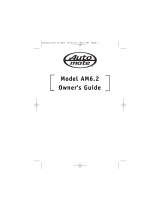
Operating Door Locks - With
Remote Keyless Entry (If equipped)
If your vehicle has this feature, you
can lock and unlock your doors and
rear hatch from up to 5 m (15 feet)
away using the key chain transmitter
supplied with your vehicle.
• Lock ( ):
If you depress the corresponding
button on the transmitter, all four
doors and rear hatch will lock and
the hazard lamp will flash once.
• Unlock ( ):
If you depress the corresponding
button on the transmitter, all the dri-
ver’s door will unlock, the hazard
lamp will flash twice and the dome
light and/or rear cargo area light will
come on for 30 seconds if their
switches are placed in the center
position.
To unlock the other doors and rear
hatch, depress the corresponding
button twice within three seconds.
After depressing this button, unless
you open the doors within 30 sec-
onds, all four doors will lock auto-
matically.
• Rear hatch window unlock ( ):
If you depress the corresponding
button on the transmitter, the rear
hatch window will unlock.
• Panic ( ):
If you depress the corresponding
button on the transmitter for more
than 2 seconds, the horn will sound
and hazard lamp will flash for about
27 seconds.
This device complies with Industry
Canada Standard RSS-210.
Operation is subject to the following
two conditions:
1. This device may not cause interfer-
ence, and
2. This device must accept any inter-
ference, including interference that
may cause undesired operation of
the device.
KNOWING YOUR VEHICLE
3-6
WARNING
Leaving your vehicle unlocked
can invite theft or possible harm
to you or others from someone
hiding in your vehicle while you
are gone. Always remove the
ignition key, engage the parking
brake, close all windows and
lock all doors when leaving
your vehicle unattended.
S4BLA303
WARNING
Changes or modifications not
expressly approved by the party
responsible for compliance
could void the user's authority
to operate the equipment.
BL-ENG (CAN)-3.qxd 7/28/05 5:52 PM Page 6






















